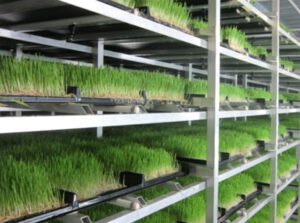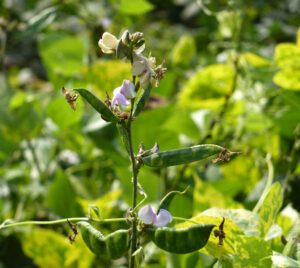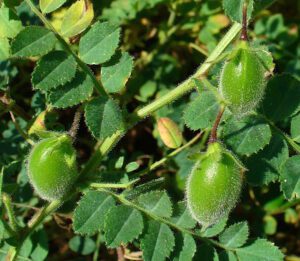Large scale or commercial barley farming is a very common and popular business in many countries around the world. Barley is actually among the most popular and common cereal crops. Hordeum vulgare or barley is actually a member of the grass family and it is a major cereal grain grown in temperate climates globally. Commercial production of barley started a long time ago. And it is among the first cultivated grains (particularly in Eurasia and people started barley farming as early as 10,000 years ago).
Currently, around 70 percent of global barley production is used as animal fodder, and the remaining 30 percent is used as a source of fermentable material for beer and certain distilled beverages and also as a component of various foods. Barley is used in soups and stews, and in barley bread of various cultures. Barley grains are commonly made into malt in a traditional and ancient method of preparation.
Barley is a widely adaptable cereal crop. Commercial barley farming is very popular especially in temperate areas where it is grown as a summer crop, and also as winter crop in the tropical areas. World total production of barley was 157 million tonnes in the year of 2020. Total barley production in the year of 2020 was led by Russia, producing about 13 percent of the world total. Spain, Germany, Canada and France were major producers.
Uses of Barley
Barley is the main ingredient in beer and whisky production. Nonalcoholic drinks such as barley water and roasted barley tea have been made by boiling barley in water. Barley is also widely used as animal feed. Nearly half of the United State’s barley production is used as livestock feed. And there are also some other uses of the barley such as algistatic, measurement, ornamental and cultural.

Barley Nutrition
Barley is very nutritious. According to Wikipedia, a 100 grams reference serving, cooked barley provides 123 kilo calories of food energy and it is also a good source of essential nutrients including dietary fiber, B vitamin, niacin and dietary minerals (including iron and manganese). According to healthline, a 100 grams of uncooked, hulled barley contains the following nutrients:
- Carbs: 73.5 grams
- Fiber: 17.3 grams
- Calories: 123 kilo calories
- Fat: 2.3 grams
- Protein: 12.5 grams
- Vitamin B6: 16% of the RDI
- Riboflavin: 17% of the RDI
- Thiamine: 43% of the RDI
- Iron: 20% of the RDI
- Folate: 5% of the RDI
- Potassium: 13% of the RDI
- Copper: 25% of the RDI
- Phosphorus: 25% of the RDI
- Magnesium: 33% of the RDI
- Manganese: 97% of the RDI
- Selenium: 54% of the RDI
- Zinc: 18% of the RDI
Health Benefits of Barley
As you can see above, barley is very nutritious and rich in numerous nutrients. It is very healthy and good for human health. Here we are trying to describe the top health benefits of consuming barley.
- Barley is very rich in many beneficial nutrients. It is a great source of many vitamins, minerals and other essential beneficial plant compounds. Soaking or sprouting the barley before consumption can improve absorption of these nutrients.
- Barley is a great source of soluble fiber (such as beta-glucan). And these soluble fibers help to reduce hunger and enhances feelings of fullness which will help you to lose weight.
- Regular consumption of barley will help you to improve your digestion, because it is a very good source of soluble and insoluble fiber.
- Consumption of barley may also help you to prevent gallstones and reduce the risk of gallbladder surgery.
- Beta-glucans available in barley may help to lower the cholesterol level.
- Adding barley to your regular diet will help you to lower high blood pressure and ‘bad’ LDL cholesterol. And all these will help you to reduce the risk factors for heart disease.
- Soluble fiber and magnesium present in barley may help you to protect against diabetes. So, you can add barley to your regular diet if you have type 2 diabetes.
- Fiber and other beneficial compounds found in barley may fight of certain types of cancer (particularly those of the colon).
Advantages of Barley Farming Business
Commercial or large scale barley farming is very easy and simple, even the beginners can also start this business easily. Starting commercial barley farming is just like starting any other crop farming business. Commercial production of barley is very profitable and it can be a great income source. Here we are trying to describe the top advantages of commercial barley farming business.
- Commercial production of barley is very profitable and it’s a great way for generating good income.
- As we have mentioned earlier, starting commercial barley farming is very easy and simple. Even the beginners can start this business easily.
- Commercial barley farming is already and establish business and may people are doing this for making money.
- You don’t have to worry much about starting and operating barley farming business. And you will find many farmers for help within your area.
- Barley plants are very strong and hardy. These plants generally require less caring and other management. So, growing barley commercially is very easy and simple.
- Both demand and value of barley are very high in the market. So, profits in this business will be very high.
- As barley already has very good demand and value in the market, so marking your products will be very easy.
- Commercial production of barley is highly profitable and it can be a great employment source for the people (especially for the educated but unemployed people).
- Production costs and hassles are relatively as compared to many other crop production business. So, profits will be much higher.
- Barley is very nutritious and good for human health, and you can enjoy fresh barley if you start your own production.
How to Start Barley Farming?
Starting commercial barley farming is very easy and simple and it’s just like wheat farming or oats farming. You can start this business easily, even if you are a beginner. Although, we recommend having practical experience before starting this business. Here we are trying to describe more about this business from planting caring to harvesting and marketing.
Site Selection
Commercial barley farming can be done in a wide range of soil type such as sodic, light and saline soil. But the plants grow well and produce more in moderately heavy loam to sandy soils having neutral to saline response as well as moderate fertility. Acidic soils are not good for barley cultivation.
Prepare the Soil
Preparing the soil perfectly is very important for large scale or commercial barley farming business. Ploughing 2-3 times will be enough to make the land weed free. And try to bring fine tilth before sowing. After ploughing, apply 3-4 harrowing for conserving moisture into the soil. The stubbles and roots of earlier crop should be hand-picked up and dash out of the ground as it attracts termites.
Climate Requirement For Barley Farming
Barley can be grown both as summer crop and as winter crop. But it is mainly cultivated as Rabi season crop in India. Barley generally require temperature between 12°C and 16°C at growing stage and between 30°C and 32°C at maturity. Barley crop is very sensitive to frost at any stage of it’s growth. The yield of the crop is highly impacted by incidence of frost at flowering stage. This crop has very good tolerance to drought conditions.
Choose a Variety
There are numerous varieties available to choose from. You can choose any variety depending on it’s availability in your area. You should consult with a local farmer before selecting a variety.
Propagation
Propagation of barley is very easy and it is done through seeds.
Purchase Seeds
Barley seeds are easily available in the market. You can purchase your desired variety from any of your local seed supply store. You can also consider purchasing online.
Planting
Broadcasting and seed drill method are used for planting or sowing the seeds. Use depth of 3-5 cm for crop under irrigated conditions and 5-8 cm depth for rain-fed conditions. Use row to row spacing of 22.5 cm. In case of delay sowing, use spacing of 18-20 cm. Try to complete sowing from mid of October to mid of November for getting optimum yield. You will need around 35 kg seeds per acre under irrigated conditions, and around 45 kg seeds per acre under rain-fed conditions.
Caring
Barley plants are very strong and hardy, and they generally require less caring and other management. Although, taking additional caring will help the plants to grow well and produce more. Here we are describing the basic caring of barley plants.
Fertilizing: Apply fertilizer done of N:PK at the rate of 25:12:6 kg per acre (in term of Urea at the rate of 55 kg per acre, SSP at the rate of 75 kg per acre and MOP at the rate of 10 kg per acre). Apply full dose of phosphorus and potash at the time of sowing as a basal application, whereas give nitrogen dose before giving pre-sowing irrigation.
Watering: 2-3 irrigation are required during the life cycle of the barley plants. Apply first irrigation at crown root initiation (for example, 25 days to 30 days after sowing the seeds). Apply second irrigation at panicle emergence stage.
Controlling Weeds: Controlling weeds is very important for commercial barley farming business, because weeds consume most of the nutrients from the soil. Manual weeding is a good option. To control narrow leaf weeds use Isoproturon 75%WP at the rate of 500 grams per 100 Ltr of water or Pendimethalin 30% EC at the rate of 1.4 Ltr per 100 ltr water for one acre.
Pests & Diseases
Barley plants are susceptible to some common pests and diseases, just like other crops. Here we are trying to describe about the common pests and diseases of the barley crop and their controlling methods.
Aphids: Aphids are nearly transparent and soft-bodied sucking insects. Use chrysoperla predators 5-7 thousands per acre or use neem concentrate 50 grams per liter. You can also spray with Thiamethxam or Imidacloprid 60 per acre in 100 liter of water.
Army Worm: Army worm consume leaves from the edges or sometimes completely. They are cyclic in nature showing 3-4 generation. Allow the natural creatures that can parasitize the larvae which destroy the crops is the natural way for controlling army worms.
Wireworm: Wireworms are light brown in color and they damage seedlings. Treat the seeds before sowing with Cruiser Maxx which contaain Thiamethoxam at the rate of 325 ml per 100 of seeds.
Stinkbug: These bugs are shield in shape and are eigher green or brown in color having yellowish red marking. Eliminate weeds all around the crop to eradicate the stinkbug naturally. You can also use permethrin and bifenthrin for controlling all these pests.
Ear Head Bug: Ear head bugs are feed on emerging panicle and the adults attack crop on milky stage. You can spray Malathion or Carbaryl at the rate of 1 gram per liter of water in case of severe infestation.
Flag Smut: Flag smut is a seed borne disease and infestion spread through wind. Treat the seed with fungicides like carboxin 75WP at the rate of 2.5 gm per kg of seeds, Carbendazimat the rate of 2.5 gm per kg seed, Tebuconazole at the rate of 1.25 gm per kg of seed if the disease level in the seed lot is high.
Grass Hopper: Nymphs and adult grass hoppers feed on leaves. Remove all plant remains after harvesting and follow proper sanitation, cleanliness in the field. Spray with Carbaryl 50 WP at the rate of 900 grams per acre if infestation is observed.
Thrips: Thrips are mostly observed in dry weather. Keep blue sticky traps at the rate of 6-8 per acre. Also to reduce the incidence spray Verticillium lecani at the rate of 5 grams per liter water.
Yellow Rust/Stripe: Use rust resistant variety of barley for controlling this disease. Try to avoid excess use of Nitrogen. If you observe the symptoms of stripe, then do dusting of Sulphur at the rate of 12 to 15 kg per acre or take spray of Mencozeb at the rate of 2 gram per liter or spray the crop with Propiconazole (Tilt) 25 EC at the rate of 1 ml per liter of water.
Powdery Mildew: Grayish white powdery growth on the leaf, sheath, stem and floral parts of the barley plants are the common symptoms of the powdery mildew disease. Spray with wettable sulphur at the rate of 2 grams per liter of water or Carbendazim at the rate of 200 gram per acre. Spray with Propiconazole at the rate f 1 ml per liter of water in case of high incidence. These are the common pests and diseases of the barley crop. Consult with your local agriculture extension office if you need more help.
Harvesting
Barley crop generally matures at the end of March or April depending upon variety you cultivated. Avoid delay in harvesting to avoid over ripening. When moisture in grain reaches about 25 percent to 30 percent is the right stage for harvesting barley. Use serrate edge sickles for manual harvesting. And store in dry place after harvesting.
Yield
It’s very difficult to tell the exact amount, because it depends on numerous factors such as cultivar, farm management, weather conditions etc. But on an average, you can expect a yield of between 1.8 and 2 tonnes per acre.
Marketing
Marketing barley is very easy and simple. You can easily sell your products in the local market. Although, you should set your marketing strategies before starting this business.
These are the common steps and ways for starting and operating a successful barley farming business. Hope this guide has helped you! Good luck and may God bless you!






